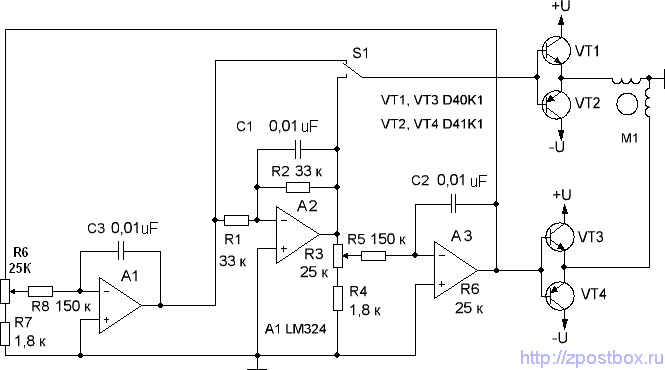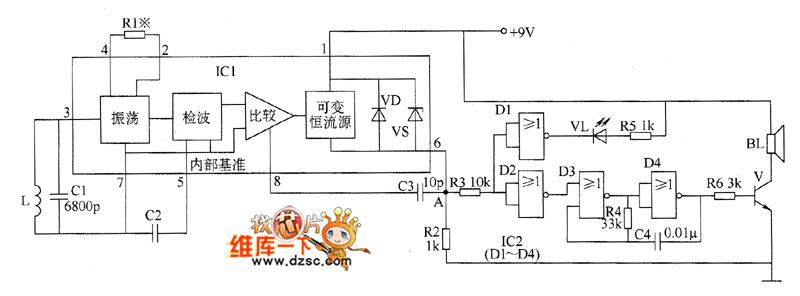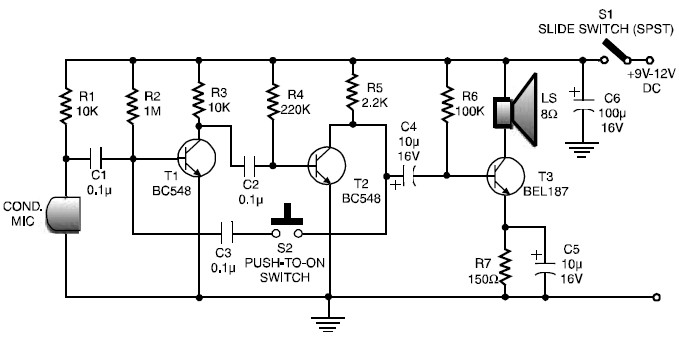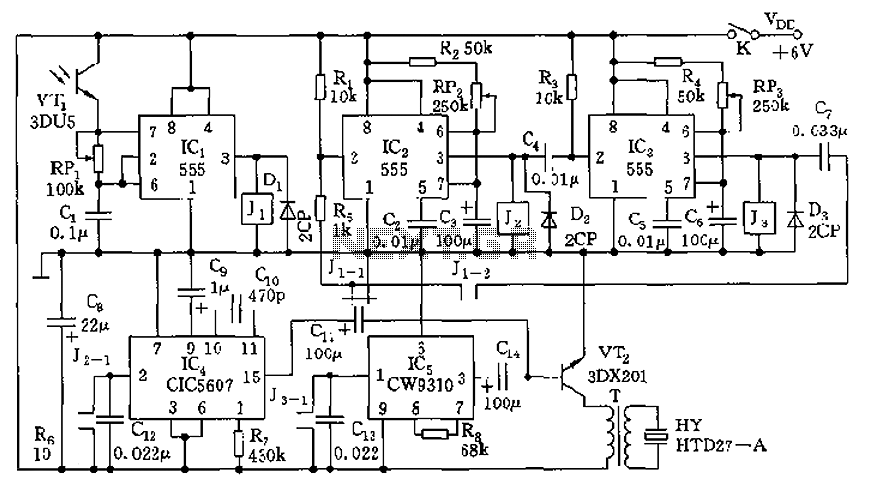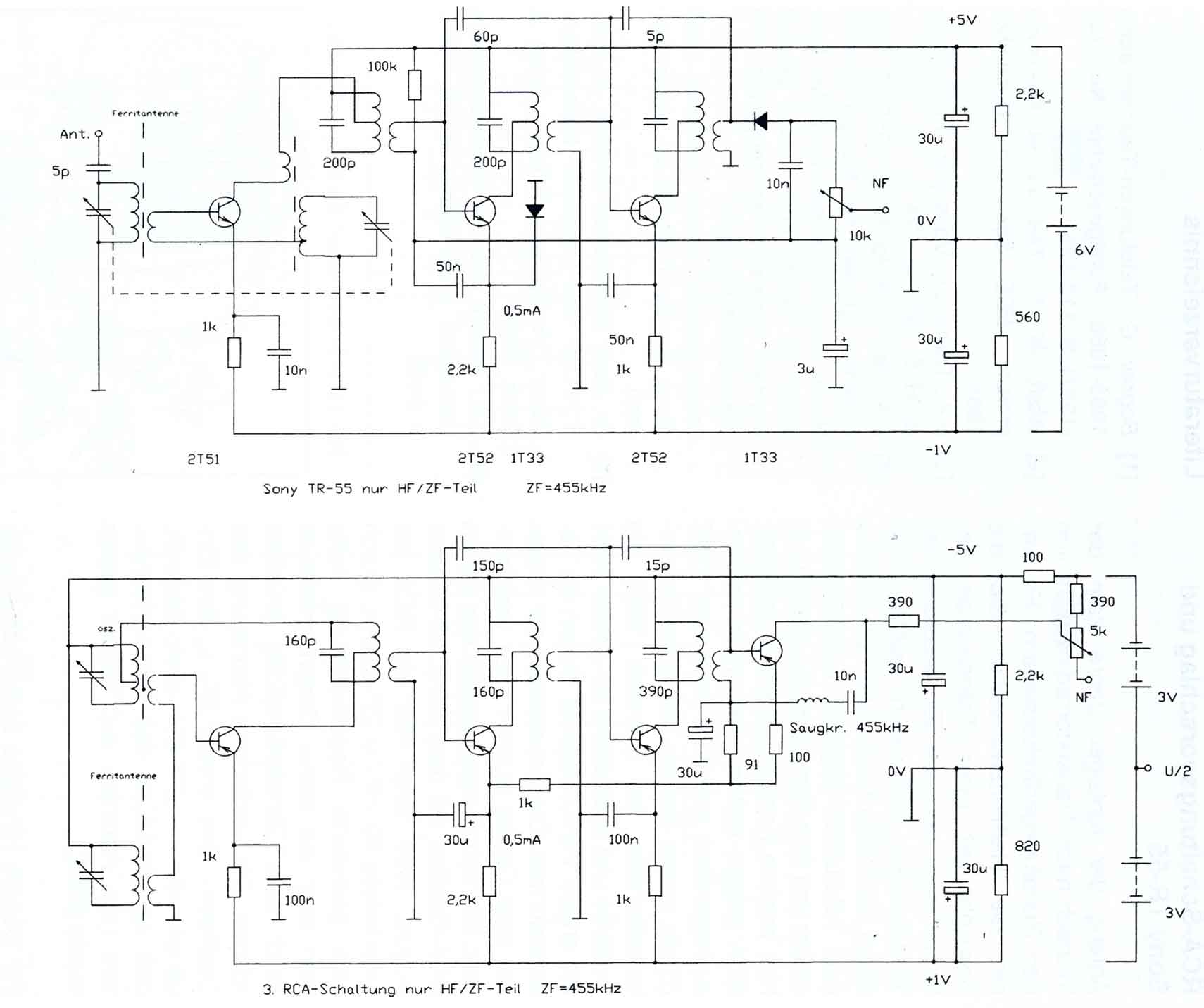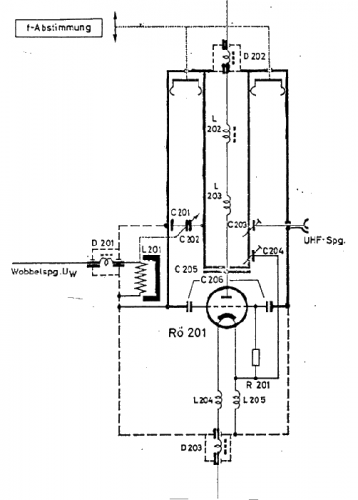
Low-Offset Simple Video Buffer Circuit
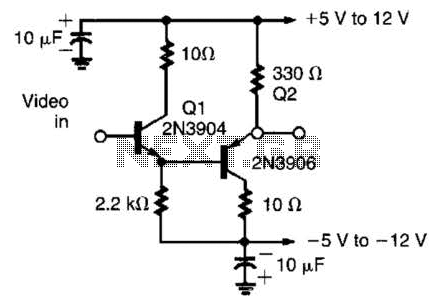
This circuit has demonstrated effectiveness as a video buffer and can easily drive a 75-ohm load to a 1.5-V peak-to-peak output. The bandwidth exceeds 20 MHz, and the DC offset is less than 0.05 V, attributed to the difference in VBE of transistors Q1 and Q2. Additionally, the supply lines should be adequately bypassed, requiring a voltage of 5 V or higher.
The described circuit functions as a video buffer designed to interface with video signals while maintaining signal integrity. It is capable of driving a standard 75-ohm load, which is commonly used in video transmission systems. The output voltage level of 1.5 V peak-to-peak is suitable for compatibility with typical video equipment.
The bandwidth specification of greater than 20 MHz indicates that the circuit can handle high-frequency video signals, making it suitable for applications involving video processing or transmission. The low DC offset of less than 0.05 V ensures minimal distortion in the output signal, which is critical for maintaining image quality in video applications. This small offset arises from the characteristics of the bipolar junction transistors (BJTs) Q1 and Q2, where their base-emitter voltage (VBE) variations contribute to the overall performance of the circuit.
To ensure optimal performance, it is crucial that the power supply lines are well bypassed. This means that decoupling capacitors should be placed close to the power pins of the circuit to filter out high-frequency noise and stabilize the supply voltage. A supply voltage of 5 V or more is recommended to provide adequate headroom for the circuit's operation while ensuring reliable performance across the specified bandwidth.
In summary, this video buffer circuit is well-suited for applications requiring robust signal handling and minimal distortion, making it a valuable component in video signal processing and transmission systems. Proper power supply management will further enhance its performance and reliability. This circuit has proved to be an effective video buffer and will easily drive a 75- load to 1.5-V p-p output. BW is better than 20 MHz and there is less than 0.05-V dc offset, which is the difference in VBE of Ql and Q2.
The supply lines should be well bypassed, 5 V or more.
The described circuit functions as a video buffer designed to interface with video signals while maintaining signal integrity. It is capable of driving a standard 75-ohm load, which is commonly used in video transmission systems. The output voltage level of 1.5 V peak-to-peak is suitable for compatibility with typical video equipment.
The bandwidth specification of greater than 20 MHz indicates that the circuit can handle high-frequency video signals, making it suitable for applications involving video processing or transmission. The low DC offset of less than 0.05 V ensures minimal distortion in the output signal, which is critical for maintaining image quality in video applications. This small offset arises from the characteristics of the bipolar junction transistors (BJTs) Q1 and Q2, where their base-emitter voltage (VBE) variations contribute to the overall performance of the circuit.
To ensure optimal performance, it is crucial that the power supply lines are well bypassed. This means that decoupling capacitors should be placed close to the power pins of the circuit to filter out high-frequency noise and stabilize the supply voltage. A supply voltage of 5 V or more is recommended to provide adequate headroom for the circuit's operation while ensuring reliable performance across the specified bandwidth.
In summary, this video buffer circuit is well-suited for applications requiring robust signal handling and minimal distortion, making it a valuable component in video signal processing and transmission systems. Proper power supply management will further enhance its performance and reliability. This circuit has proved to be an effective video buffer and will easily drive a 75- load to 1.5-V p-p output. BW is better than 20 MHz and there is less than 0.05-V dc offset, which is the difference in VBE of Ql and Q2.
The supply lines should be well bypassed, 5 V or more.
